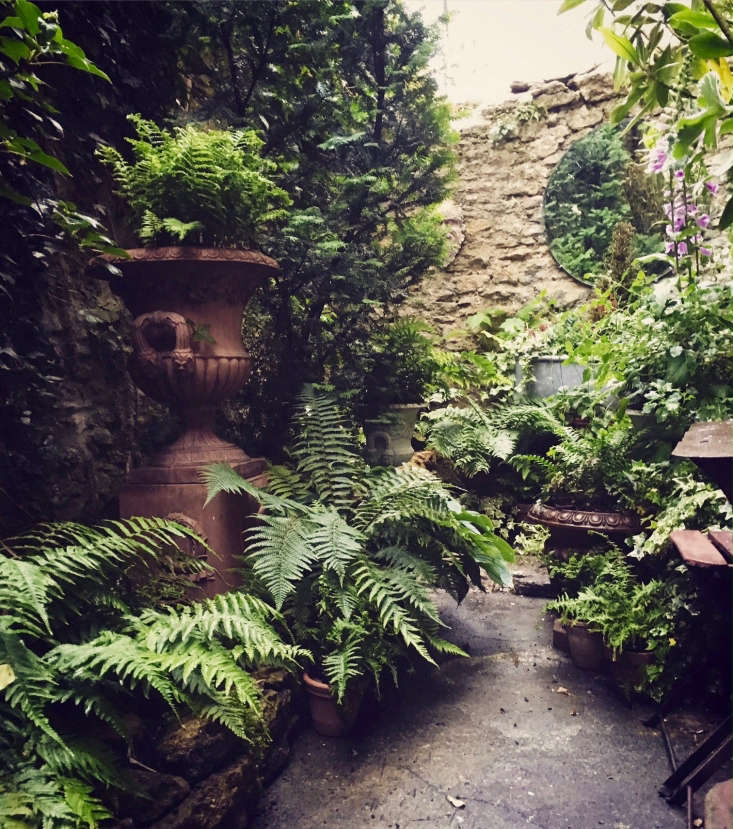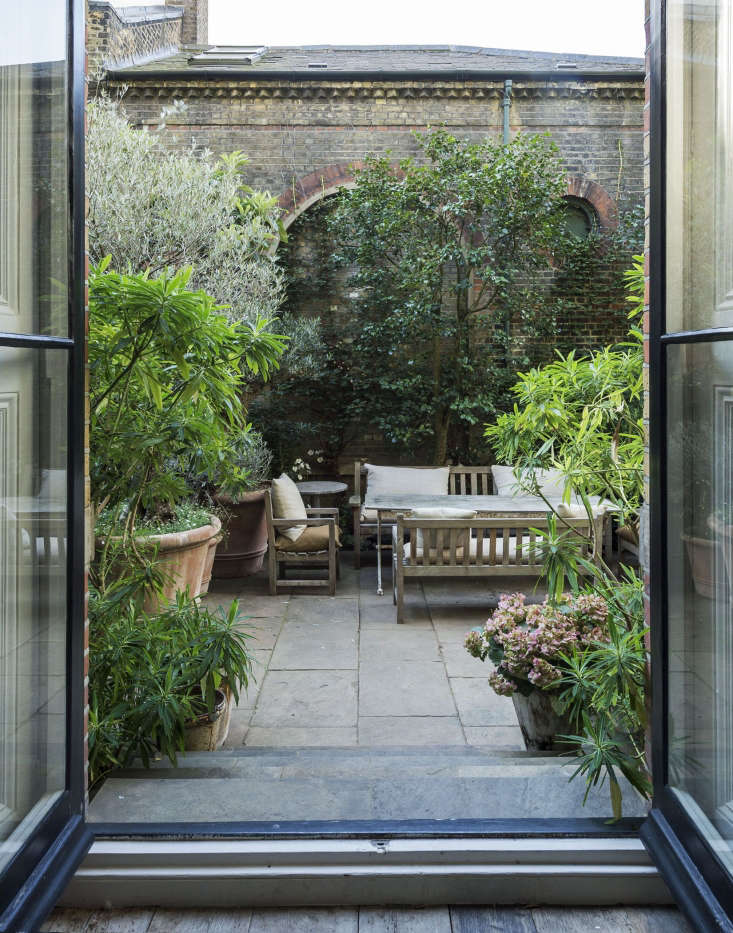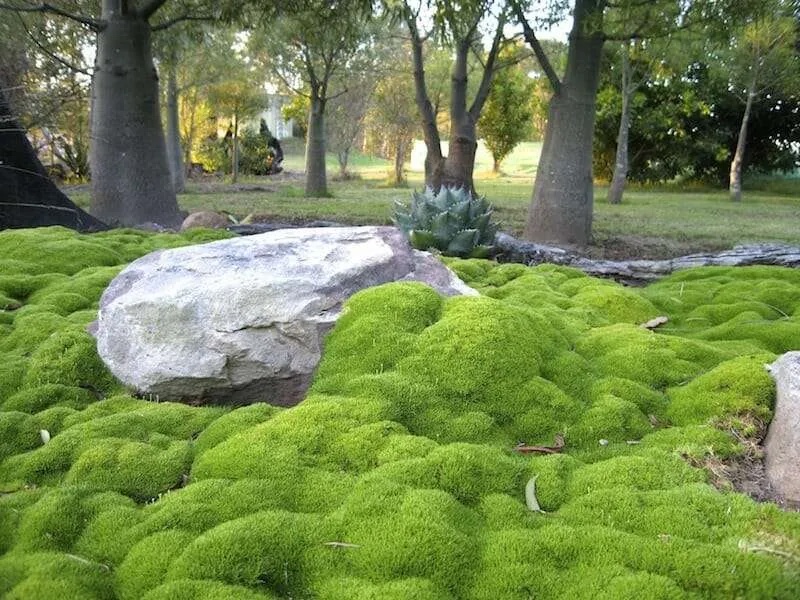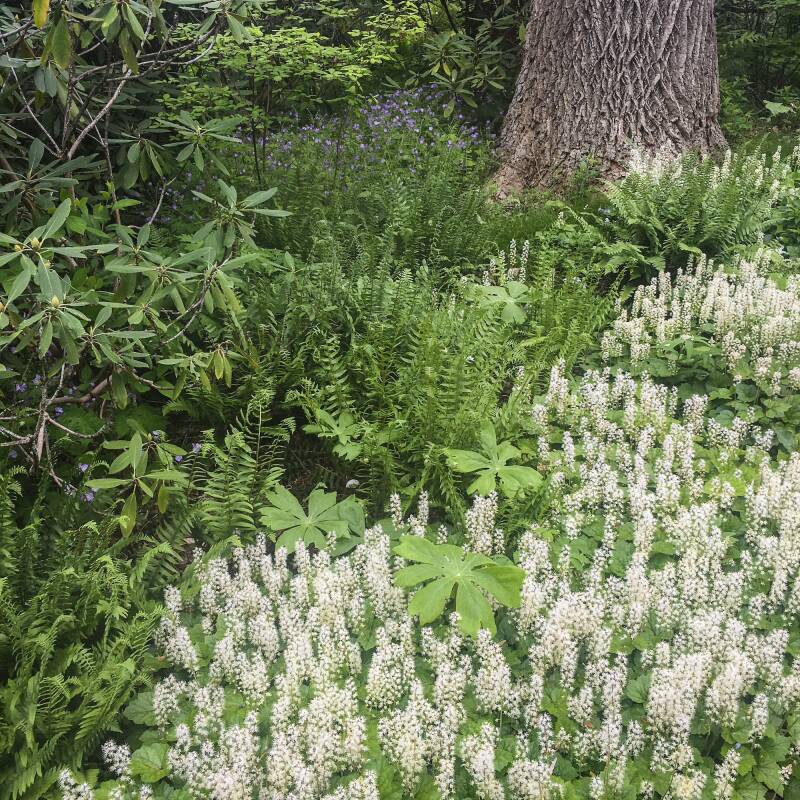All week, we’re resurfacing the most popular posts published on Gardenista this year. If this story is new to you, enjoy! And if you’ve already read this before, we hope you’ll like it just as much as the first time around.
‘But what shall I do with the garden?’ As an avid gardener with friends who have little or no experience in cultivating plants or designing a garden, this is a question I am often asked. Faced with a blank canvas, a limited budget, and next to no planting knowledge, many new garden owners find themselves unsure how to approach what could be their very first outdoor space. The answer, perhaps, is more simple than they think. Approach it just as you would approach a new home, with the same pragmatic starting points followed by largely subjective decisions.
In this story, my first in a new series on creating a garden from scratch, I offer pointers on how to begin your garden journey.
1. Assess the space.

Start with a clean slate. If the garden is overgrown, clear the surface mess to get an accurate picture of the size of the space, any paths or hardscaped areas as well as boundaries. Then make a scale drawing. What are the boundaries made from? Are there hedges that you can prune and shape? Or fences that are potential spaces for climbers? If you dislike a fence, it can probably be painted to create an easy and effective makeover.
2. Wait and watch.

It’s all too easy to go charging in, loppers in hand, and remove plants, shrubs, or trees, especially if you are assessing the garden in a season when little seems to be in flower or leaf. Instead of being hasty and potentially making bad pruning decisions, spend time watching the garden, ideally for a year—it’s the best way to begin. This gives you time to really get a sense of how light moves through the garden in different seasons (it will dramatically change from summer to autumn or winter). And it also offers you a chance to see how shrubs and trees look in different seasons, too, as well as any herbaceous perennials and bulbs that may appear. Mature plants are very expensive to replace, so you want to be absolutely sure before you remove them from the landscape. Last, you’ll want to be on the lookout for any visiting wildlife, which will ultimately be a key element of your garden.
3. Make a mood board.

Chances are, you will already have years of saved images on Instagram or Pinterest. (If you don’t, start saving—both are great methods to collect inspiration.) Putting these all onto a big board will allow you to figure out the landscape styles and plant types that you gravitate toward. Are your favorite gardens formal with lots of structure, or do they tend to be wild and naturalistic? Are your preferred plants blowsy and romantic, or do you lean towards the dynamic forms of ornamental grasses and new perennial planting? Look for the common themes, while also observing your own space and getting a feel for what could fit. If there are particular garden designers you admire, gather images of their projects, too; quickly, a certain palette and planting preferences will begin to emerge.
4. Pinpoint borrowed views.

Almost every garden has features that exist beyond its boundaries. If you’re in a town or city, that means everything around your garden—a neighbor’s beautiful cherry tree that you get to enjoy through spring, a beautiful architectural feature in the distance, or a prevailing material that you’ll want to echo in your own space. If you’re in the country, borrowed views could mean distant fields, trees, or neighboring boundaries. Take all of this in and consider the features you’d want to highlight—an epic countryside view is worth framing or referencing as part of your own garden plan. By connecting your own garden to the wider area, you can create a sense of place. Conversely, there may be unattractive features you may want to block out by using plants or creating a sense of enclosure.
5. Find your perfect place in the garden.

Before you think about where to site the planting beds, decide where you will want to sit in the garden (whether for contemplation or conversations). Most convenient is a table located close to the house to allow easy access. Do you want an area where you can sit in the morning or evening sun? Do you want it to be secluded from any neighbors? Do you need a lawn or play area for children? And will it be hidden or do you need to see it from within the house?
And don’t forget to spend time thinking about the journey to reach these places —and whether they need to be direct or meandering. This will be dictated by your space to a degree.
The orientation of the garden will also play a part in all these decisions. In a south-facing garden, you’ll almost certainly want to have some shade; in a garden with more limited sunlight, you’ll want to maximize where it shines, either placing some chairs there or plants to catch the golden rays. It’s also worth thinking about whether you’ll need a more utilitarian area, a shed, or some other place to store your garden paraphernalia.
6. Decide on how much time you’re willing to put into gardening.

Not all gardens are made equal—some require a lot more upkeep than others. Borders packed with herbaceous perennials will require more upkeep (including weeding, cutting back, and mulching) than borders containing mostly shrubs. Hedges will need to be trimmed annually. In terms of time, a lawn can be the most time-consuming of all as it requires cutting through the growing season as well as edging. No garden is maintenance-free, but it’s worth considering how much time you’d like to spend taking care of your new plants before you commit to a garden design.
7. Visit gardens.

In addition to creating a mood board, visit local gardens of a similar size to your own space. Not only will you see what grows well in your area, but you’ll also see what works with the local architecture. In rural gardens, it’s arguably even more important to get a sense of what thrives in the local conditions.
8. Observe the garden from the house, too.

Don’t forget to assess the garden views from various windows and different levels from inside the home. If you have a lot of windows looking out to the garden, then you’ll want to make it a space that looks good year-round, not just through the summer, and you’ll probably want to consider a few understated lights. Perhaps you’ll want to position the most interesting garden features so that they’re visible from inside the house, too.
Find the entire Garden From Scratch series here:
- A Garden from Scratch: How to Build a Strong Foundation
- A Garden from Scratch: How to Begin the Plant Selection Process
- A Garden from Scratch: How to Choose Plants and Put Them Together
- A Garden From Scratch: How to Plant for Success (A Case Study)
- A Garden from Scratch: 7 Ways to Save Money When Creating a Garden
- A Garden from Scratch: 8 Regrets from My First Years of Gardening
- A Garden From Scratch: The No-Work Plants I Swear By
N.B.: This post was first published January 2024.












Have a Question or Comment About This Post?
Join the conversation (0)